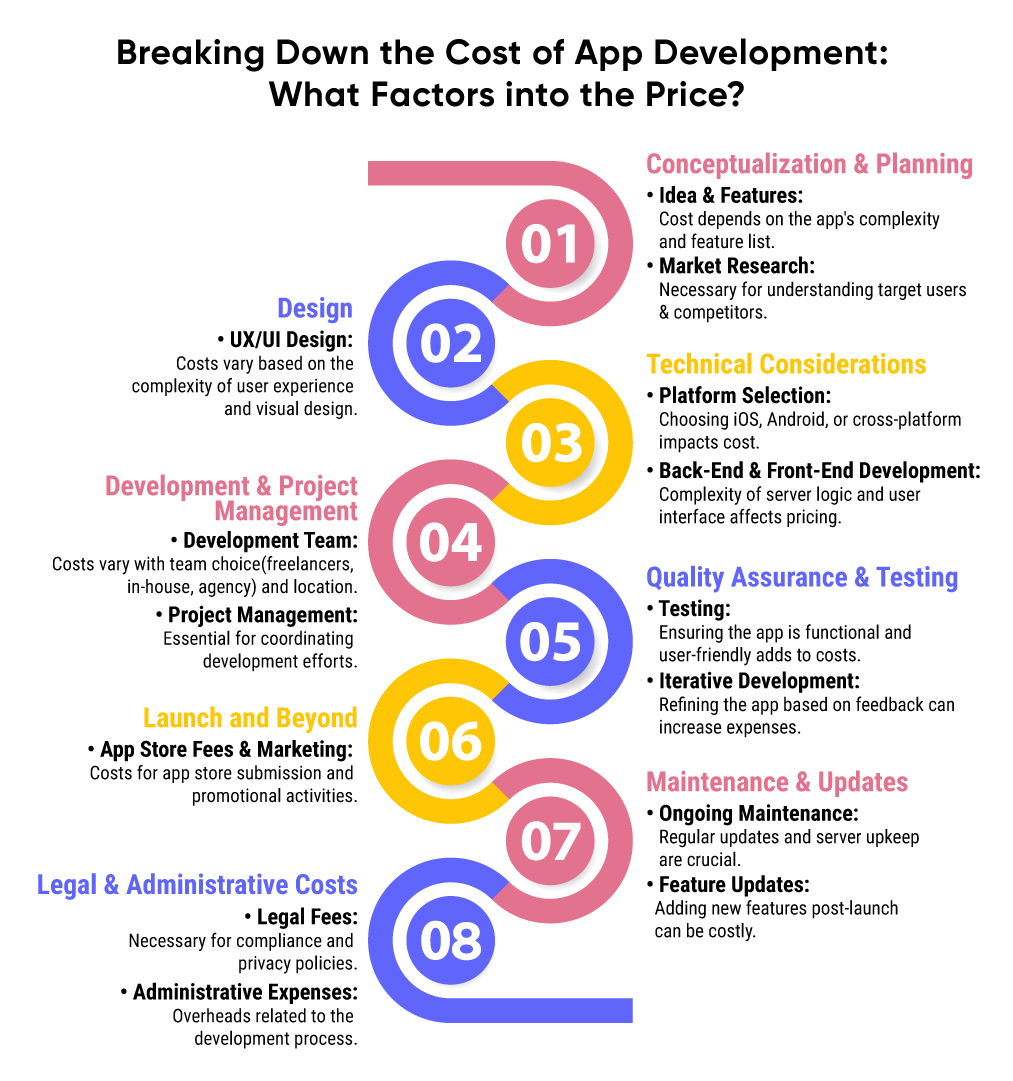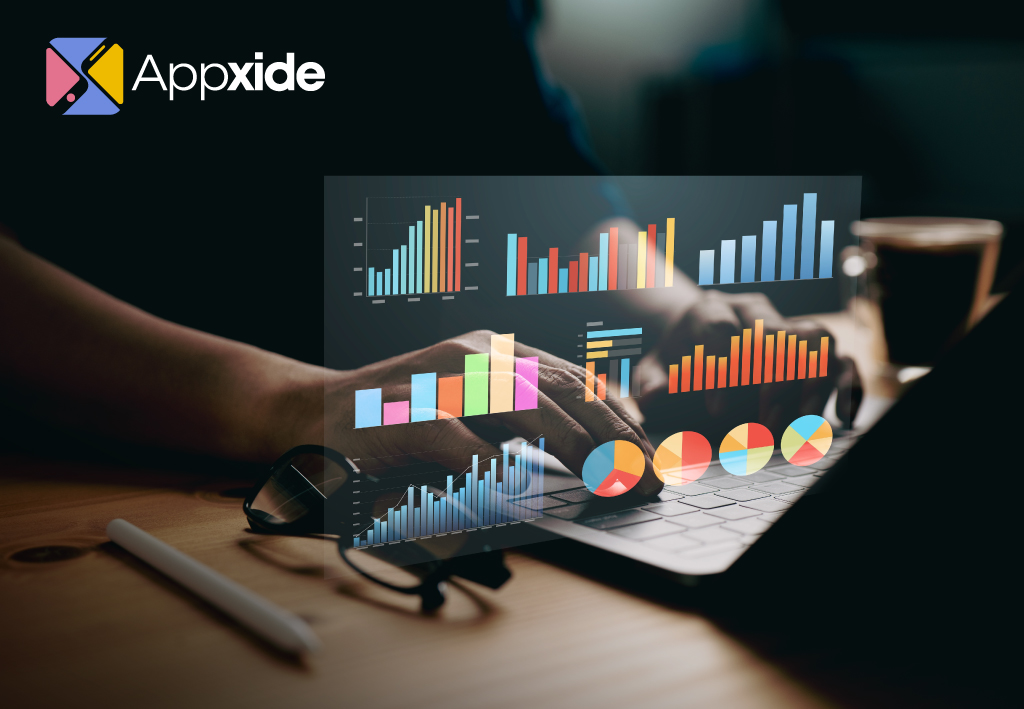Welcome to our in-depth exploration of the often-asked question, “How much does it cost to have an app developed?” In this blog, we’ll dive into the various facets that influence the cost of app development. Understanding these components is crucial for entrepreneurs, businesses, and individuals looking to bring their app ideas to life. Let’s embark on this journey to demystify the cost structure of app development.
The Difficulties of App Development Cost
1. The Type of App You Need
The first step in understanding app development costs is recognizing the type of app you require. Are you looking for a simple, static app, or a dynamic one with real-time features? The complexity of your app is a significant driver of cost.
- Simple Apps: Less complex, limited features.
- Moderate Apps: Integration with APIs, mid-level features.
- Complex Apps: Advanced features, AI capabilities, custom animations.
2. Platform Choices: iOS, Android, or Both?
Your platform choice directly impacts your development costs. Options include:
- iOS Development: Known for a more streamlined process but with a specific user base.
- Android Development: Offers a larger user base but comes with fragmentation issues.
- Cross-Platform Development: Can be cost-effective but might compromise on performance and user experience.
3. Design: The Make or Break Factor
App design is not just about aesthetics; it’s about user experience. A well-designed app can significantly increase user engagement, but it comes at a cost.
- Basic Design: Functional but basic user interface.
- Custom Design: Tailored to specific user needs and brand identity.
- High-End Design: Top-tier design with exceptional user experience and custom animations.
4. Backend Development: The Backbone of Your App
Backend development is crucial for functionality, especially for apps requiring user data management, real-time updates, and more.
- Simple Backend: Basic data management.
- Complex Backend: Real-time features, high-level security, and large data handling.
5. Maintenance and Updates
Remember, the cost doesn’t end at launch. Regular updates and maintenance are essential for keeping your app relevant and functional.
- Basic Maintenance: Regular updates, bug fixes.
- Ongoing Development: Continuous improvements and new features.
The Role of User Research in Cost Estimation
When delving into the realms of app development and cost estimation, one aspect that often flies under the radar is the significance of user research. Understanding the pivotal role of user research is not just about aligning your app with the target audience’s needs, but it’s also a strategic step in effective cost management.
Why User Research is a Game-Changer
- In-Depth Market Understanding: Before a single line of code is written, it’s crucial to have a comprehensive understanding of the market. This involves identifying the target user demographic, their preferences, behavior patterns, and pain points. Conducting thorough user research can prevent costly reworks and feature misalignments that may arise from assumptions about user needs.
- Identifying Core Features: Through user research, developers can pinpoint which features are essential from the user’s perspective. This prioritization helps in allocating budget effectively, ensuring that the resources are spent on functionalities that add real value to the end-users.
- Adaptability to Market Trends: User research keeps your app development process in sync with current market trends. By understanding ongoing trends, you can avoid investing in outdated features or technologies, thereby optimizing development costs.
Methods of Conducting User Research
- Surveys and Questionnaires: These tools are invaluable for gathering quantitative data about user preferences and expectations. They can be conducted online and reach a broad audience, providing insights that are pivotal in shaping the app’s features.
- Interviews and Focus Groups: Direct interactions through interviews or focus groups offer qualitative insights. They allow for deeper understanding of user needs and can unveil subtle nuances that surveys might miss.
- Competitive Analysis: Analyzing competitors can provide a clear picture of what works and what doesn’t in your market niche. Understanding your competition helps in making informed decisions about unique features and functionalities, potentially saving costs on unnecessary or less impactful features.
How User Research Influences Cost
- Preventing Feature Creep: One of the biggest cost escalators in app development is feature creep – the continuous expansion or addition of new features. User research helps in setting clear boundaries on what’s necessary, preventing the project from becoming bloated with unnecessary functionalities.
- Efficient Resource Allocation: With the insights gained from user research, you can allocate your resources more efficiently. This means investing in areas that will offer the most return in terms of user engagement and satisfaction, rather than spending blindly on less impactful areas.
- Long-Term Cost Benefits: While user research may seem like an upfront cost, it’s an investment that pays off in the long run. By aligning your app with user expectations from the outset, you reduce the risk of costly post-launch modifications and ensure a smoother, more cost-effective development process.
A Comparative Analysis: Pricing Table
To give you a clearer picture, let’s compare the costs based on app complexity.
| Complexity Level |
Design Cost |
Development Cost |
Total Estimated Cost |
| Simple App |
$1,000 – $5,000 |
$5,000 – $10,000 |
$6,000 – $15,000 |
| Moderate App |
$5,000 – $15,000 |
$10,000 – $50,000 |
$15,000 – $65,000 |
| Complex App |
$15,000 – $30,000 |
$50,000 – $250,000 |
$65,000 – $280,000 |

Additional Cost Factors
Several other factors can influence the final cost of your app development.
- Integration with Third-party Services: Incorporating external services like social media or payment gateways.
- Location and Expertise of the Development Team: Costs vary significantly based on geographic location and the team’s expertise.
- Testing and Quality Assurance: Ensuring your app is bug-free and user-friendly.
Understanding the Timeline
The development timeline is another critical aspect. A quicker turnaround often means higher costs.
- Rapid Development: Higher cost due to more resources.
- Extended Timeline: Can be more cost-effective but delays market entry.
The Bottom Line: Balancing Quality and Cost
Balancing quality and cost is key. Opting for the cheapest option might lead to more expenses in the long run due to poor quality.
Tips for Cost-Effective Development
- Prioritize Features: Focus on must-have features initially.
- Choose the Right Development Team: Their expertise can save costs in the long run.
- Consider MVP: Launch a Minimum Viable Product and iterate based on feedback.
FAQs About How Much Does It Cost to Have an App Developed
1. Can I develop an app for under $10,000?
Yes, it’s possible for simple apps with basic functionality and design.
2. How much does it cost to maintain an app annually?
Maintenance can cost anywhere from 15% to 20% of the original development cost annually.
3. Does it cost more to develop an app for iOS or Android?
Development costs are comparable, but iOS may be slightly higher due to its stringent App Store guidelines.
4. In what time frame can an app be created?
Development time varies from a few weeks to several months, depending on complexity.
5. Can I reduce the cost of app development?
Yes, by prioritizing essential features and considering an MVP approach, you can significantly reduce costs.
Last Words:
Understanding the factors influencing the term “how much does it cost to have an app developed” is vital for budgeting and decision-making. By considering the type of app, platform, design complexity, backend development, and ongoing maintenance, you can get a realistic estimate of your project. Remember, investing in quality development is crucial for the success of your app.






